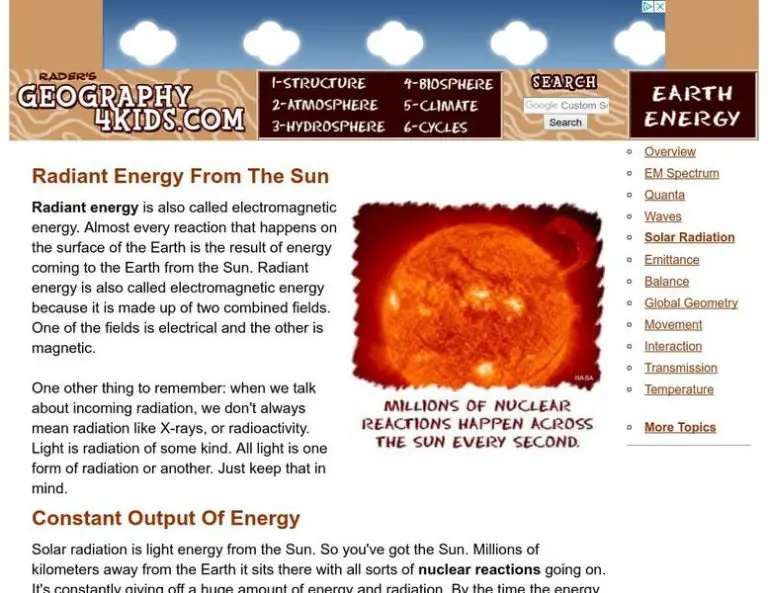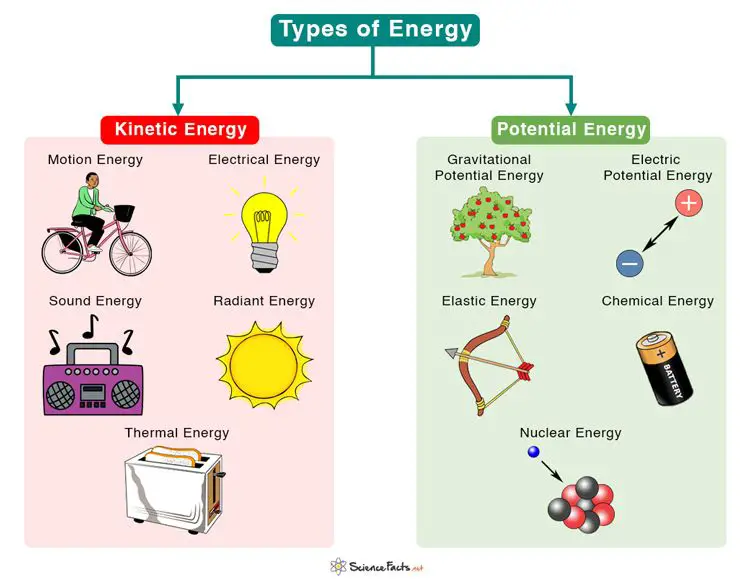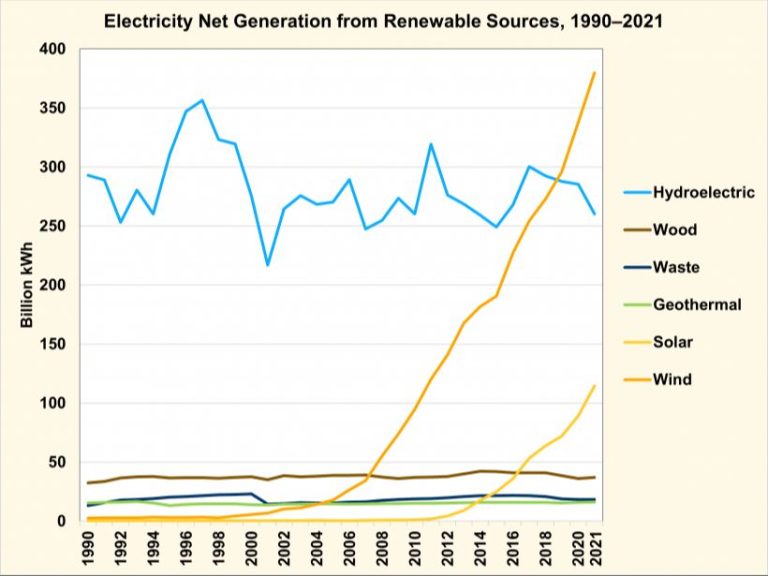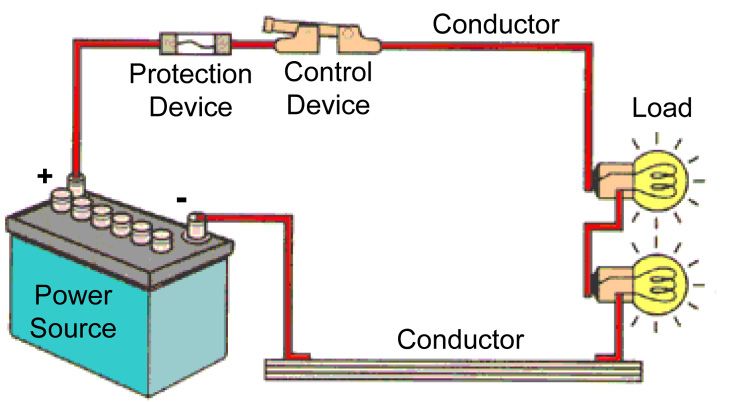What Does Renewable Energy Mean On My Electric Bill?
What is renewable energy?
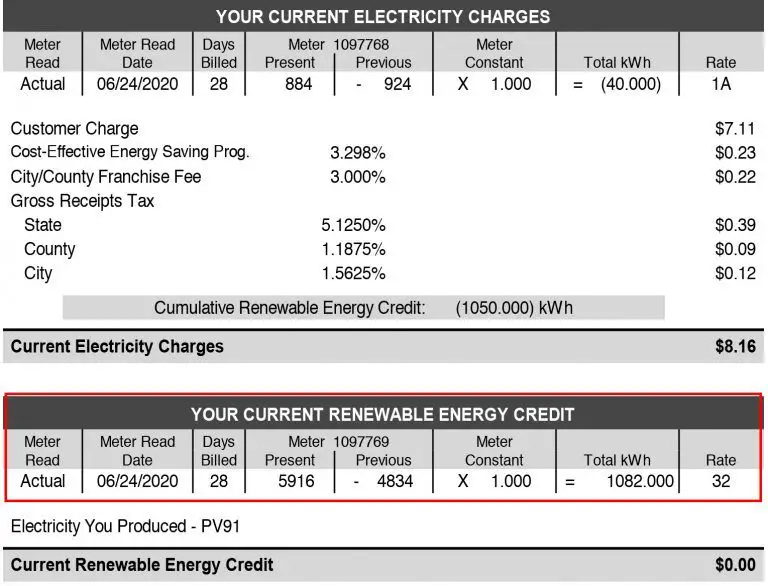
Renewable energy, also known as clean energy, comes from natural sources that are constantly replenished. Some common renewable energy sources include:
Solar energy – The sun’s rays can be converted into electricity through solar photovoltaic panels or concentrated to produce heat for electricity generation or water heating. (Source 1)
Wind energy – Wind turbines convert the kinetic energy of wind into mechanical power which drives a generator to produce electricity. Wind is generated from uneven solar heating of the atmosphere and the earth’s surface.
Hydropower – Flowing water from dams, waves, tides or ocean currents can be used to spin turbines to generate electricity.
Geothermal energy – Thermal energy generated and stored in the Earth can be extracted to heat and cool buildings or to generate electricity.
Biomass – Organic plant and animal waste can be used to produce heat, electricity, transportation fuels and products through processes like combustion, digestion, fermentation and extraction. (Source 2)
Why choose renewable energy?
Switching to renewable energy provides numerous benefits for the environment, energy independence, and long-term price stability. According to the Union of Concerned Scientists, renewable energy produces minimal global warming emissions and air pollution compared to fossil fuels. Fossil fuel emissions contribute to climate change, poor air quality, and public health issues. Increasing renewable energy usage reduces dependence on finite resources like coal, oil and natural gas. Relying on indigenous renewable resources makes countries more energy independent.
The EPA notes that renewable energy prices are often fixed over long periods, unlike fossil fuels which experience price volatility. Renewable energy investments hedge against fossil fuel price increases. While renewable infrastructure requires upfront investments, over decades the fixed renewable energy prices provide protection from volatility.
How renewable energy works with the electric grid
Renewable energy sources like solar and wind are intermittent – they generate electricity depending on the weather and time of day. This introduces complexity when integrating them into the electric grid which traditionally relies on controllable power plants that can be ramped up or down to meet demand.
To accommodate intermittent renewables, grid operators use forecasting to predict renewable output. They also rely on flexible generation from hydroelectric dams, natural gas plants, and energy storage to ramp up or down to complement renewables. Curtailment, where renewable output is purposely reduced, is sometimes used when high renewable generation exceeds demand. Grid operators also improve power lines to handle two-way electricity flow and smooth integration.
Despite the challenges, regions around the world are successfully integrating very high levels of renewables. For example, Iowa and South Dakota produced over 50% of their electricity from wind in 2019 (https://www.energy.gov/energysaver/grid-connected-renewable-energy-systems). With smart policies and grid upgrades, intermittent renewables can be integrated seamlessly.
Renewable energy and your electricity bill
The integration of more renewable energy sources like wind and solar into the electric grid is changing how electricity bills are structured and priced. While renewable energy generation typically has very low ongoing fuel costs compared to fossil fuels, it requires major upfront investments in equipment and infrastructure. This long-term shift affects utility billing in several ways.
Studies show that a higher renewable energy mix leads to slightly higher average electricity rates in the near term, but can result in long-term savings as more costs are recovered upfront and fuel price volatility is reduced. According to analysis by the National Renewable Energy Laboratory, “Increased use of renewable electricity and continued cost reductions could provide consumers savings on their monthly utility bills by 2050.” [1]
Higher fixed monthly charges are becoming more common as a way to stabilize utility revenue as consumption declines due to efficiency and self-generation like rooftop solar. Time-of-use rates that charge more for peak demand times and incentivize load shifting are also increasingly being implemented. But overall, studies predict gradually declining electricity bills in the coming decades as renewable power costs decrease.
Increasing renewable energy percentage
There are a few ways electricity customers can increase the percentage of renewable energy they use:
Utility or state renewable energy programs: Many utilities and states offer options like green pricing programs that allow customers to pay a premium on their bill to get some or all of their power from renewable sources. These programs help support construction of renewable energy projects.
Buying renewable energy certificates (RECs): RECs represent the environmental benefits of renewable energy generation and can be purchased separately from electricity. Buying RECs helps provide financial benefits to renewable energy projects.
Installing solar panels: Putting solar photovoltaic panels on your roof generates renewable electricity for your home. Plus, any excess power produced can be sold back to the utility. State and federal incentives like tax credits can help defray the upfront costs of residential solar.
Renewable energy certificate programs
Renewable energy certificates (RECs) are a market-based instrument that provide proof that 1 megawatt-hour (MWh) of electricity was generated from a renewable energy resource like wind or solar power. As the EPA explains, “RECs represent the environmental attributes of the power produced from renewable energy projects and are sold separately from commodity electricity” (Source).
RECs allow consumers to purchase renewable energy even if their local utility does not provide a renewable power option. When you buy a REC, you are financially supporting and increasing demand for renewable electricity, even if that power is not being directly delivered to your home or business. RECs incentivize companies to invest in renewable energy by providing a revenue stream for projects.
The price of RECs varies based on supply and demand dynamics in renewable energy markets. According to Investopedia, REC prices have ranged from $0.5 per MWh up to around $35 per MWh in recent years, with an average price of $1 to $5 per MWh (Source). Many companies purchase RECs in bulk directly from renewable power projects. Consumers can also find REC purchasing options through renewable energy programs offered by utilities, state agencies, and various private sector companies.
Community solar programs
Community solar programs allow households to buy into shared solar installations that are located offsite. This provides an opportunity to access solar energy for those who cannot install rooftop solar panels. Through virtual net metering, subscribers receive bill credits for their portion of the energy produced by the community solar array.
Community solar is typically offered by electric utilities, solar developers, or community groups. Interested households can purchase or lease part of the community solar array. The size purchased is based on the household’s energy needs. Subscribers don’t have to deal with system maintenance or repairs.
According to the Solar Energy Industries Association (SEIA), community solar provides benefits including reduced electricity costs, supporting local job creation, and allowing renters or homeowners without suitable roofs to access solar power. By virtually connecting subscribers to an offsite solar installation, community solar expands renewable energy access.
Rooftop Solar Incentives
There are several financial incentives available to homeowners who install rooftop solar panels. These incentives help offset the upfront costs of going solar.
Net metering allows solar homeowners to get credit for excess electricity they send back to the grid. This credit then offsets the cost of electricity drawn from the grid when solar panels aren’t producing enough, such as at night. Net metering makes going solar more financially viable. Most states have enacted net metering policies, but the details vary.1
The federal solar tax credit allows homeowners to deduct 26% of solar installation costs from their federal taxes. This credit will be available through the end of 2023 before dropping to 22% for 2024. Some states and utilities also offer additional tax credits or rebates for solar installation costs.2
Rebates and performance-based incentives are offered by some utilities, municipalities, states or the federal government. These provide an upfront discount on installation costs. Amounts and availability vary greatly by location.
Predicting future renewable energy costs
There are several key factors that impact predictions for future renewable energy costs, including:
Technology improvements – As renewable energy technologies like solar panels and wind turbines advance, they tend to become more efficient and cost-effective. For example, a 2020 NREL report found that utility-scale solar costs declined 89% between 2009 and 2019, while wind turbine costs declined 43% to 64% over the same period.1
Economy of scale – As renewable energy expands, manufacturers can produce components at greater scales leading to lower costs per unit. Experts predict continued cost declines as scale increases.2
Policy impacts – Government incentives and regulations that favor renewable energy can accelerate cost declines by driving greater investment and deployment. However, policy shifts could also slow progress and impact cost predictions.3
Overall, most experts predict renewable energy costs will continue falling in the coming decades if supportive policies and research funding continue. But there is uncertainty around how quickly new technologies will mature and scale.1 Better projections inform energy planning and incentivize appropriate investments in renewables.
The renewable energy transition
Many countries have set ambitious goals for transitioning to renewable energy sources like wind and solar in the coming decades. According to projections by the International Energy Agency (IEA), the share of renewables in total energy supply is expected to rise from 14% in 2020 to over 30% by 2030, based on current policy settings alone (IEA, 2023). The IEA’s World Energy Outlook 2022 states that global renewable capacity additions annually will surpass new fossil fuel additions as early as 2025 (IEA, 2022).
Many countries have outlined ambitious grid modernization plans to accommodate higher penetrations of renewable energy. The International Renewable Energy Agency (IRENA) estimates that $5.7 trillion USD per year in renewable energy investments are required through 2030 to achieve net zero emissions by 2050 (IRENA, 2022). Grid modernization investments will focus on smart grid technologies, battery storage, electric vehicle charging infrastructure, and transmission line upgrades. For example, the U.S. Department of Energy has outlined a plan to build new high-capacity transmission lines as part of achieving a carbon-free grid by 2035 (DOE, 2022).

